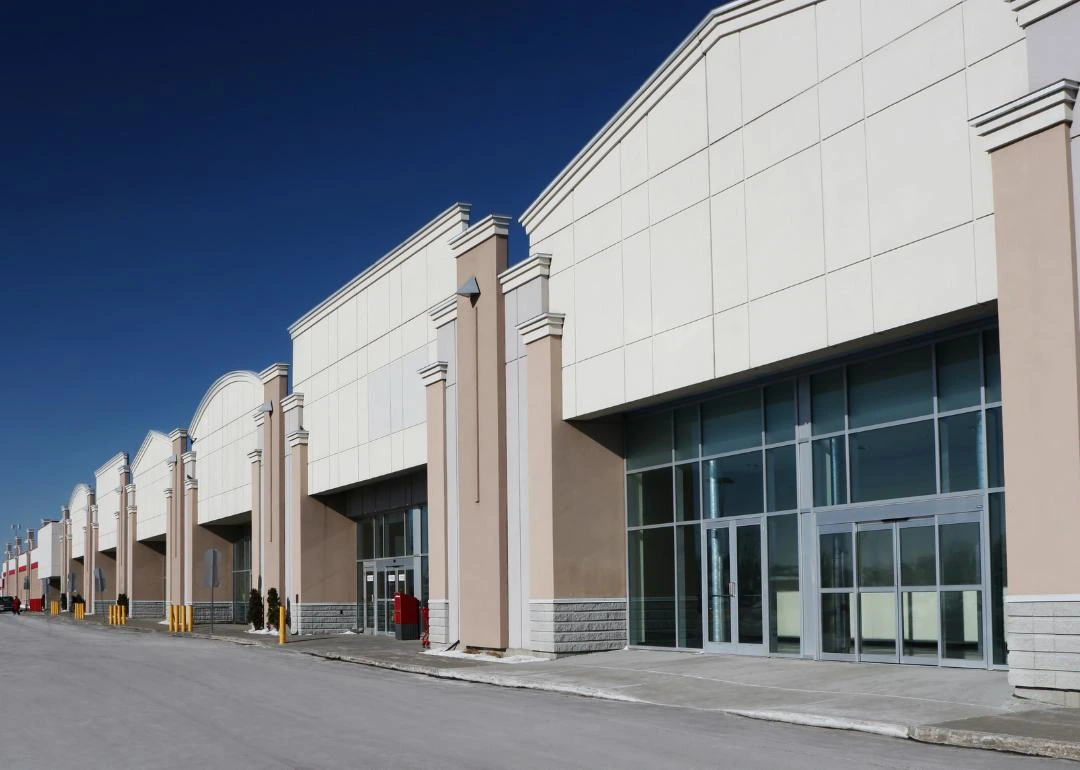Malls are closing across the country. These states are keeping them alive

Malls, once hubs for big chains and small retailers alike, are struggling. That is shifting the way entrepreneurs launch and run businesses.
According to a 2023 Jones Lang LaSalle report, mall vacancies are at their highest levels in the past 15 years, exacerbated by COVID-19 pandemic lockdowns, the proliferation of online shopping, and closures and bankruptcies among popular mall retailers and major department stores that have historically anchored the destinations.
As a result, malls are closing, and their popularity is waning. The number of malls in the U.S. fell from 1,500 in 2005 to about 1,150 by late 2022. And this holiday season, just 2 in 5 shoppers (41%) plan to go to stores inside malls, according to JLL’s report. That compares to at least 3 in 4 shoppers (77%) expecting to buy online with home delivery and nearly half (48%) planning to shop at physical stores that aren’t inside malls.
While malls struggle to stay relevant, developers continue to build retail space—considerably open-air centers of neighbourhoods and communities. In those developments, traditional mall tenants and new retailers alike are opening shops. Moreover, a widely cited Coresight Research report shows malls are bouncing back, especially those innovated with dining, recreational experiences, and more.
Between malls and other shopping centers, Americans continue to flock to brick-and-mortar establishments. This is true in some locales more than others. To dig deeper into these trends, Findbusinesses4sale used International Council of Shopping Centers data to identify states with the highest concentration of marketplaces, measured as the number per 100,000 residents in 2022. For its data analysis, the ICSC defines marketplaces as malls, strip malls, outlets, and coordinated or planned retail streets.
FIND BUSINESSES FOR SALE
Discover an amazing website that can help you find a business for sale of any type in any location around the country.

Marketplaces Prevail in the South
Shopping centers are most concentrated among southern U.S. states—and nowhere more than South Carolina. Marketplaces are prevalent nationwide, particularly in Charleston, Columbia, Greenville, Hilton Head Island, and Myrtle Beach. Notable Columbia-area shopping centers are adapting to changes in how their communities shop and live—shifting spaces to host gyms, charter schools, and even churches—to become more embedded in average people’s days.
Florida is another U.S. leader in shopping centers. The state’s population has grown fast, spurring a need for more housing—some of which has been built within the footprints of existing malls. These live-and-shop plazas bake a customer base directly into their malls and are becoming increasingly trendy in South Florida. Fine dining is another staple of thriving malls, and some have built restaurants headed by celebrity chefs as modern anchors for their locations. Major grocer Publix has also acquired mall properties and inserted itself as the anchor store, making these malls a destination for everyday necessities.
Trends within these states are becoming more common in successful malls across the country, revitalizing indoor and outdoor shopping centers with more than just a fresh coat of paint.
TOP RANCHES FOR SALE
Search for the top ranches for sale in Canada with up-to-date, detailed listings and the average price across them.
FAQ
How has online sales affected malls?
Online sales have significantly impacted malls by reducing foot traffic and in-store sales. Consumers increasingly prefer the convenience and variety offered by online shopping, leading to a decline in mall visits. This shift has pressured malls to adapt and diversify their offerings beyond traditional retail.
Why are department stores at risk of closure?
Once anchors for malls, department stores face closure risks due to several factors: competition from online retailers offering wider selections and competitive prices, changing consumer preferences, and the challenge of maintaining large physical spaces. The decline in mall traffic further exacerbates these challenges.
What is the overall impact of the decline of malls?
The decline of malls has broader implications, including job losses, reduced local tax revenues, and potential economic downturns in areas heavily reliant on malls. It also affects community and social aspects, as malls traditionally serve as social gathering spaces.
How can brick-and-mortar stores adapt to the rise of e-commerce?
To adapt, brick-and-mortar stores focus on experiences that can’t be replicated online, such as personalized service, in-store events, and immersive shopping experiences. They are also integrating technology for a seamless online-offline experience and diversifying their products and services to meet changing consumer needs.
What is the future of shopping centers?
Shopping centers will likely evolve into mixed-use spaces that combine retail with entertainment, dining, residential, and office spaces. Emphasizing experiential and community-focused activities, they may become more integrated with local communities, offering diverse and localized experiences that differ from the traditional mall model.
Resources
https://www.us.jll.com/en/trends-and-insights/research/retail-market-outlook
https://www.richmondfed.org/publications/research/econ_focus/2022/q3_economic_history
https://www.icsc.com/news-and-views/gpp/marketplace-statistics-by-state-map
https://www.miamiherald.com/news/local/community/miami-dade/kendall/article282171753.html
https://www.connectcre.com/stories/publix-acquires-two-tampa-area-shopping-centers/
Story editing by Jeff Inglis. Copy editing by Paris Close. Photo selection by Ania Antecka.






